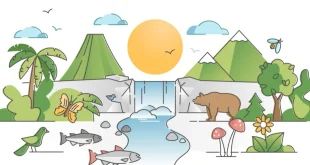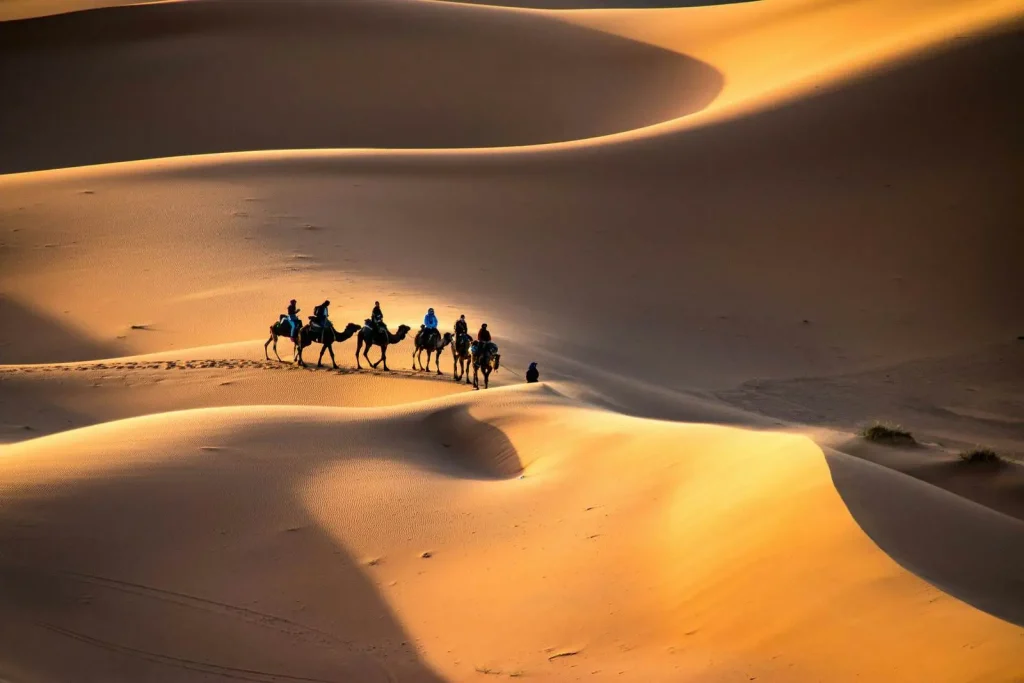
Overview
All deserts are indeed dry, it is not necessary to have to be hot. Some cold deserts are also present, and a perfect example in point is Asia’s Gobi Desert.
But then, irrespective of the region and whether it falls in the hot or cold category, all deserts are usually cold at night and receive very little precipitation. However, despite the minimal rainfall, plants that grow in deserts have adapted to such living conditions. Several things combine to make up a desert ecosystem such as;
- Characteristics
- Structure
- Animals
The ecosystem is dependent upon the type of desert whether it is cold, also known as a temperate desert, or subtropical desert referred to as a hot desert.
Cold and hot deserts have different kinds of ecosystems. However, in spite of being very different, the two kinds of deserts have a few similarities such as;
- In both kinds of biomes dry air is found.
- Both get annual rainfall of fewer than 10 inches.
- Both have severe living conditions that impact animals or people living there.
- Plants have adapted to having less water intake and harsher temperatures.
- Animals have adapted to the conditions as far as food consumption, energy, and when to be active.
In general, deserts are made up of several abiotic components, such as the lack of moisture, sand, extreme cold or hot temperatures, and anything else that makes up an ecosystem that isn’t alive. However, several biotic factors affect deserts, including living things, such as animals and plants.
Structure and functions of desert ecosystem can be accessed from https://www.brainkart.com/article/Structure-and-Functions-of-Desert-Ecosystms_7437/
Abiotic Components
Climate
There are two different climatic conditions in deserts. For example, Temperate deserts and subtropical deserts. The climate of subtropical deserts differs from that of temperate deserts.
Temperate Deserts
Antarctica is the best example of a temperate desert. The temperatures of temperate deserts are so cold, in fact, too cold, that they could even cause the death of humans.
But still, animals are living in these deserts. For their survival, these animals have adapted with time. The ways they have done this is by adding extra fat or needing less food and energy to survive.
Subtropical Deserts
Subtropical deserts are too difficult to handle by animals and plants because of the hot weather. The animals who use these deserts as homes have adapted to having less water usage. Because of the hot weather during the day, they have become nocturnal. Plants have had to adjust to utilize less water, so they are sparse and often close to the ground.
Location
Mountains
The formation of deserts can be accredited to two primary factors: the widespread circulation of global winds and rain shadows formed by mountains.
As moisture-laden air rises on the slopes of mountains, it cools and causes rainfall on the exposed side of the mountain.In the case of extensive mountain ranges, minimal moisture reaches the protected side.
Consequently, deserts are frequently located near mountainous regions comprising;
- The Caucasus Mountains in Asia, where the Kyzyl Kum and Karakum deserts are;
- Parts of California, where the Santa Cruz mountains are located;
- The Atacama Desert, which is partly instigated by the Andes Mountains in Chile;
- The Sahara Desert is affected by several different mountain ranges.
Wind Patterns
Complex global wind patterns play an important role in where deserts are located. Winds that move around the globe are the result of the change between the polar temperatures which are cooler as well as warmer equatorial temperatures.
When the air has been warmed at the equator, it moves upward and then moves toward the south and north Poles, where it loses moisture, cools off, and then sinks before returning to the equator. Therefore, steady wind patterns and shifting global patterns can subsidize where a desert is.
The passage of time greatly affects how and where deserts form. As time has passed, the positions of deserts have moved through the passage of geologic time. This change has been the result of the elevation of continental drift and mountain ranges. There are ancient deserts geologically, such as in northern Africa the Sahara Desert, 65 million years old desert, or the Kalahari located in central Africa.
The erosion forces thousands of years past formed the desert landscapes during heavy rainfall. The rain picked up sand, sediment, boulders, and cobbles as it moved down the hillsides and rocky mountain slopes.
As gravity caused the water to be moved downhill, sediments were moved down to the basin. At the base of the mountain, the water spread out across a wide-ranging area where the mouths of valleys were extended.
Temperature
The temperature of a desert differs due to its geographical location. However, a distinguishing characteristic of all deserts is the dryness. Heat is reflected by water vapor, which is either in the form of humidity or, cloud cover resulting in a cooling effect. Because of the characteristics and the reactions, deserts practice extreme temperatures, irrespective of whether it is cold or heat.
The temperature variations can result in other effects. Warm air rises and cool air sinks, so the changes in temperatures cause the air to move fast from one place to another. Due to that, deserts are windy.
Unevenly 90% of the sunlight passes through the arid, clear air, a significant difference from the approximately 40% of sunlight that characteristically enters the atmosphere in moist climates.This extra sunlight includes ultraviolet radiation, which can pose considerable risks to animals, plants, and humans, possibly causing substantial harm.
Precipitation
The desert environment has irregular and unpredictable rainfall that it does receive, although that precipitation is negligible. Rainfall patterns can vary from year to year. There can be a whole year that the desert doesn’t see a drop of rain.
Biotic Components
Biotic components of a desert, as already discussed, include the living organisms. This means plant and animal life are the two biotic components.
Plant Life
Water is essential for every living thing and everywhere. Of course, it is extremely important in the desert. Because of the absence of water, Xerophytes, plants growing in deserts have made major adaptations.
Plant Adaptations
- Until a time when there is satisfactory rainfall available to support a young plant, the seeds of annual plants stay dormant.
- Succulent plants such as cacti store water in their spines, which are remaining leaves. Photosynthesis takes place in the stems, and the stem has folds that can enlarge fast when rain falls.
- Evergreen plants have cuticles and dipped stomata on shrubs that help hold water and stop it from escaping. For example, the holly plant’s leaves are detained at 70-degree angles, so the sun only hits its sides. When the sun sinks low in the sky, the whole leaf is exposed. A fine salt covers the leaves, and that helps reflect the sun off of the plant.
The soil in the desert is known for its roughness, which allows the little moisture that is in it to pass through quickly, which means it is not properly available for plants. Salts gather as a result of the high evaporation rate. The soil becomes basic and restricts plant growth, which is also known as primary productivity.
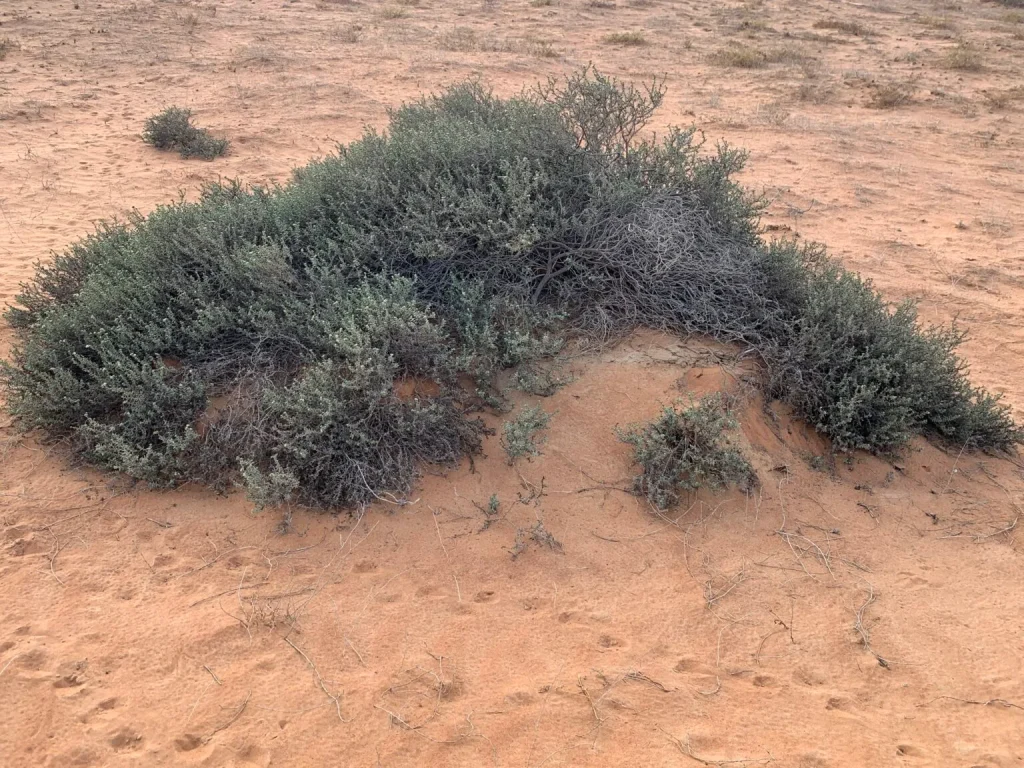
Animal Life
Because of the whole process required to sustain life in the desert, the size of specific animals and their populations is limited.
Despite common beliefs that things can’t live in the desert, several creatures have learned to survive on the distinctive plant life and in difficult conditions.
- Large mammals such as camels make their homes in the desert and are suitable to travel long periods without water. Lions live in the deserts of Africa, even though they are threatened due to changing weather patterns.
- Small rodents make their homes in the desert, from hedgehogs to gerbils. Larger jackals and hyenas are also frequently found in deserts.
- Snakes and Lizards are predominantly suited to the hot and dry, climate of the desert, as are amphibians like several toads and salamanders.
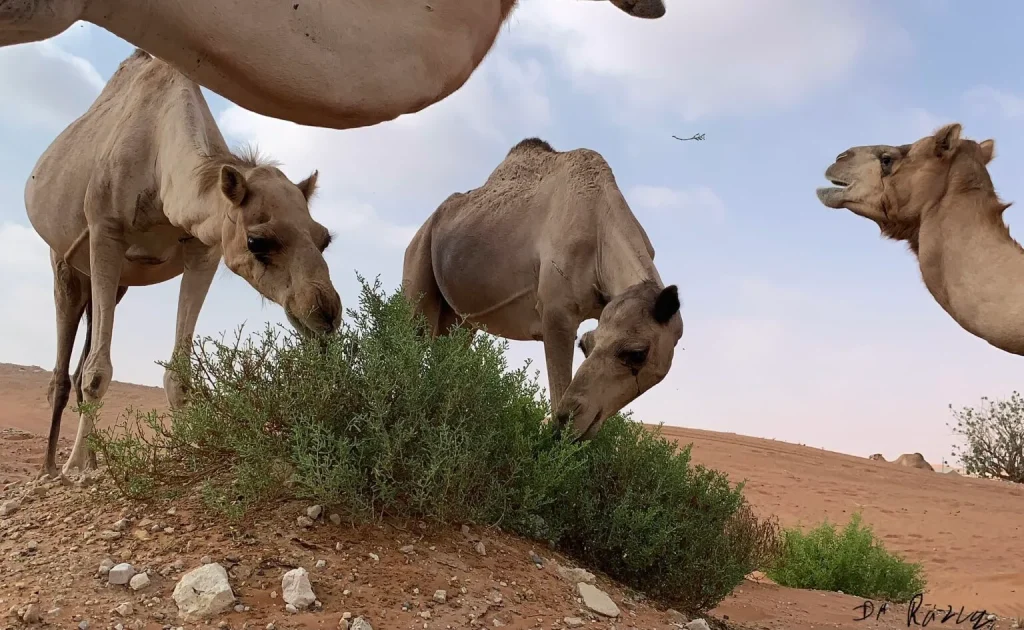
Importance of Desert Ecosystem
In spite of the high-temperature extremities, the desert ecosystem is very important for the earth. Deserts can be found on all continents, and even though they have less water, they play an important role in helping humans, animals, and the environment. https://thecliment.com/uncovering-the-beauty-of-earths-major-biomes/
Flora & Fauna
Deserts are home to a huge collection of unique animals and plants that have adapted to their severe habitats. Deserts are home to many livestock, such as goats, camels, and antelope, that provide livelihood and food for people.
Desert trees and shrubs that produce fruit for example dates, one of the oldest cultivated fruits in the world dating back to theological times, and olives and figs are an important food source in the Middle East and North Africa.
Many of these plants and animals benefit humans in addition to the Earth’s biodiversity. Farm camels in the deserts of North Africa and Asia have been consistent pack animals for thousands of years.If deserts disappear from the earth, many animals and insect species will also disappear.Many biotic factors count on deserts for water, food, and shelter.
Mineral Resources
Out of 15 mineral reservoir types on the planet Earth 13 of them are found in deserts.Some important minerals concentrate and form in the dry conditions of deserts.
Gypsum, nitrates, borates, potassium, and other salts are found in deserts when water carrying these minerals evaporates back into the atmosphere. The mining of important minerals from desert regions has become easier due to minimal vegetation.
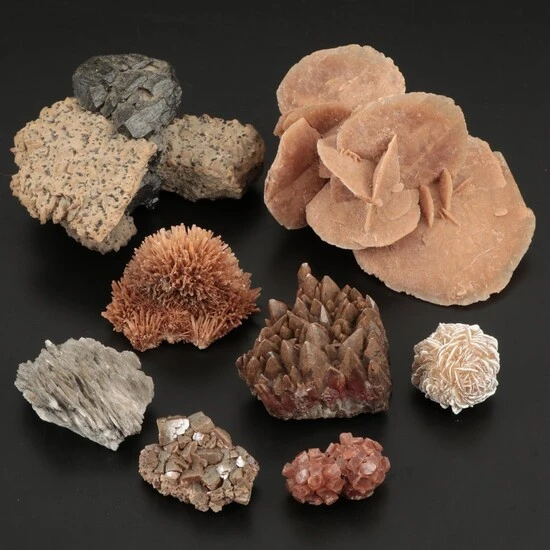
Carbon Sinks
Desert sands are acting as an important carbon sink on Earth. Scientists discovered that a type of bacteria called cyanobacteria found in the sands of the Kalahari Desert of Botswana helps collect and store carbon dioxide from the air.
These drought-resistant cyanobacteria can fix carbon dioxide in the atmosphere, and also, add significant quantities of organic matter to the nutrient-scarce sands. Since carbon dioxide is one of the major causes of global warming, these desert sands can play a serious role in preventing extra carbon dioxide from entering the atmosphere.
Leisure and Tourism
Deserts hold a unique attraction, attracting millions of visitors annually. The deserts of North Africa, and the Middle East for example, display iconic attractions like the Great Pyramids of Egypt, the historical remnants of Carthage, and numerous other unusual well-preserved archaeological remains from the past.
In the United States, the deserts of Utah, modern New Mexico, and Arizona were once home to the Chaco culture, as well as native Pueblo peoples such as the Anasazi and Hohokum, leaving behind a rich history of cultural heritage and historical significance.
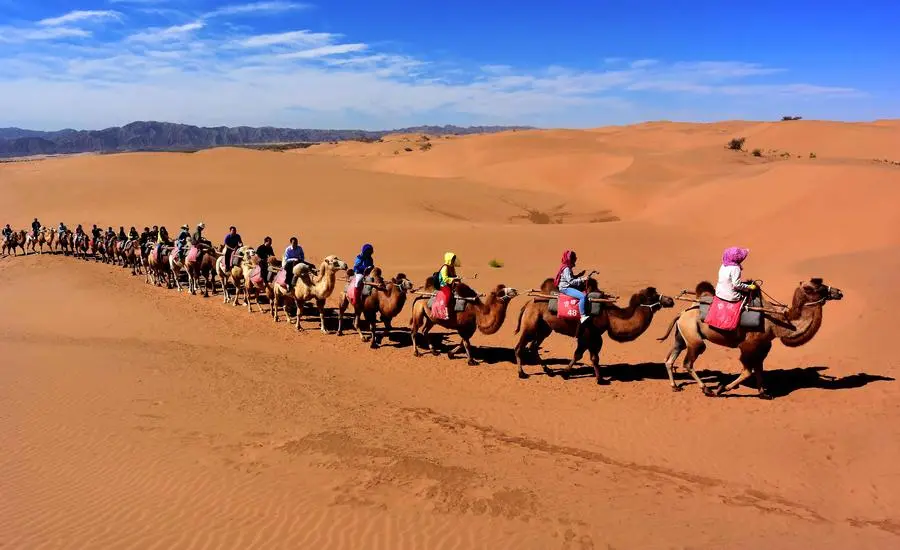
Bio-Prospecting
Desert plants have developed unique characteristics that allow them to thrive in harsh desert environments. Researchers suggest that some of these chemical adaptations may have potential medical applications for humans. A report by the United Nations on the worldwide state of deserts reveals that a recent survey of plants in Israel’s Negev desert has identified certain plants that could be used to combat malaria.
 The Climent Respect your roots, Protect your planet
The Climent Respect your roots, Protect your planet
